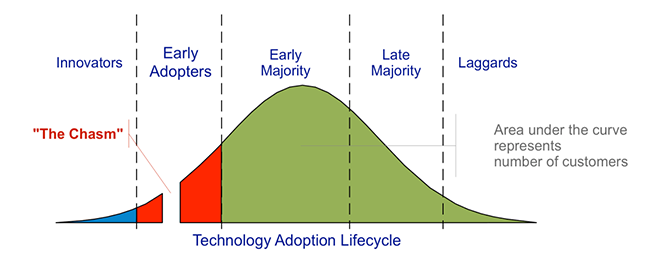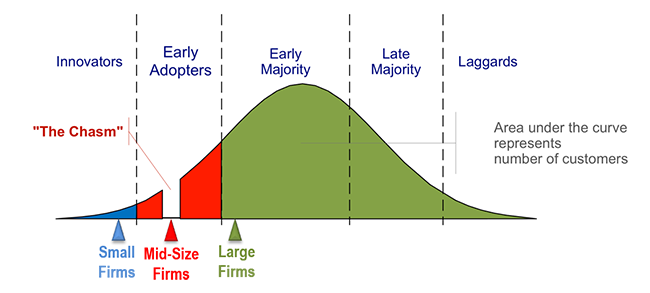Businesses and consumers are smart to question the staying power of a new technology before investing. Is it a transitory fad, a niche product for a particular segment, or does it have broad appeal and long term value?
Think of the Segway. After it was introduced in 2001, Steve Jobs predicted that it would have as great an impact as the personal computer and the production was geared to turn out 500,000 units a year, but the actual sales for the first seven years was under 30,000 units.
Among particular groups such as police departments and urban travel tour guides, the Segway did gain a foothold, but not among the general population.
Then there’s the Personal Computer—a small niche market for computer enthusiasts in the early 1970s with little relevancy for the general population.
“There is no reason anyone would want a computer in their home” declared Ken Olson, chairman and founder of Digital Equipment Corp., maker of big business mainframe computers, in 1977.
With the rise of Apple, the rest, of course, is history.
In his book, Crossing the Chasm, Geoffrey A. Moore describes a technology lifecycle in which the adoption or acceptance of a new product or innovation proceeds according to the demographic and psychological characteristics of defined adopter groups. According to Moore’s model, the first group of people to use a new product is called “innovators,” followed by “early adopters.” The “chasm” is the crucial period during which a product is either adopted broadly, or remains part of a niche market. The “early majority” and “late majority” then adopt the product, followed by the last group, known as “laggards.”
The Segway certainly had its ‘innovators’ but they were not representative of the broader market; it never crossed the chasm. By contrast, the PC penetrated the broad population over the course of about a decade.
In our research for our latest Marketing Automation Industry Report (Q1 2015) we looked at how Moore’s model applies the marketing automation sector. The innovators were almost exclusively technology firms who understood the importance of quantifying marketing processes. But over the past five years, the market broadened across many sectors. Here’s what the evidence shows; although marketing automation is still early in its lifecycle, the chasm is being crossed—at least among large companies.
Marketing automation among large firms has crossed-the-chasm and has reached the early-majority stage. By contrast, mid-sized firms are just now crossing the chasm and small firms are still in the innovators stage. This explains the growing number of marketing automation vendors seeking to gain a foothold into this market, as well as the substantial venture capital the sector has attracted. I expect marketing automation to follow a pattern similar to that observed with the adoption of email marketing, with a lag of about five years. Many of the lead management and workflow features that are driven by the needs of large B2B companies will be adopted for by both B2C and small and mid-sized firms.
If you are a marketer wondering if an investment in marketing automation is prudent in your industry and whether it will be around for the long haul, the evidence shows that it doesn’t appear this technology is going the way of the Segway.
Think your organization is ready for marketing automation?
Contact us!
© Reach Marketing LLC 2015 All Rights Reserved.









